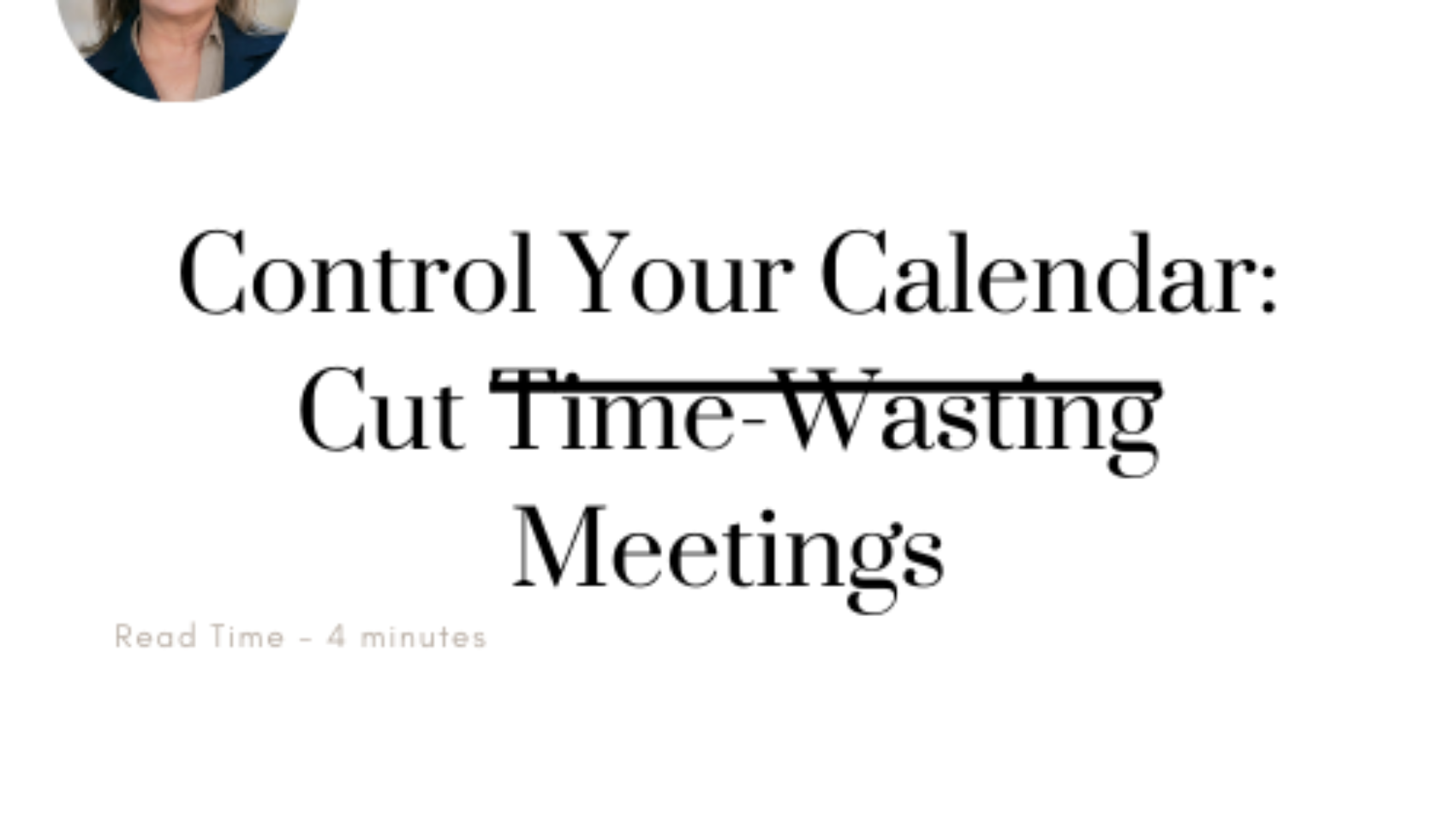Reading Time: 10 minutesHey nonprofit CEO, let’s talk about something you might be avoiding—succession planning.
I know, you’re busy doing important work, and thinking about someone replacing you feels a little weird. But here’s the thing: your mission is bigger than you. Succession planning isn’t about you stepping down; it’s about making sure your nonprofit keeps going strong.
Here’s how to pilot a plan that works and positions your organization for even greater impact.
Below, you’ll find 8 simple steps along with suggested tactics:
1. Mission First
The first step? Shift the focus from yourself to the mission. This is about making sure your organization continues to succeed and make a difference, even after a leadership change.
Tactic: Write down your thoughts on the legacy you want to leave.
Tactic: Have an open talk with your board chair about why succession planning matters.
Tactic: Do a “what happens without me” exercise with your leadership team to imagine the future of the organization.
2. Conduct a Risk Check – Which Positions Are Most Vulnerable?
Not every position needs a backup plan. Focus on the jobs that would cause problems if they suddenly became vacant.
Tactic: Make a list of key relationships and important knowledge for each critical role.
Tactic: Use “day in the life” scenarios to see how each important position functions day to day.
Tactic: Analyze what skill sets and experiences would be hard to replace for each role and address gaps with training or documentation.
3. Think Beyond the Usual Candidates
Don’t assume you know exactly who can step into key roles. Look deeper into your team—you might be surprised.
Tactic: Create a skills inventory to see the strengths of everyone in your organization.
Tactic: Set up cross-functional teams to spot hidden talent.
Tactic: Offer team-building projects that put employees in new roles outside their normal responsibilities to give people a chance to grow.
4. Build Up Your Team
Once you know who could step up, it’s time to help them grow into leaders.
Tactic: Develop an internal leadership book club focused on reading and discussing key leadership and management books, encouraging growth through shared learning and reflection.
Tactic: Create a leadership rotation program that lets top employees try out different roles.
Tactic: Tap into leadership development workshops on key skills like decision-making, communication, and conflict resolution.
5. Be Open, But Not Specific
Sharing some details about your succession plan can build trust and boost morale, but there’s no need to name specific people.
Tactic: Talk about succession planning during all-staff meetings (but don’t name names).
Tactic: Create a job shadowing program so employees can explore leadership roles.
Tactic: Share clear career paths across the organization so everyone knows how they can grow.
6. Prepare for Both Planned and Sudden Changes
Your plan needs to cover both expected and unexpected leadership changes.
Tactic: Develop knowledge transfer protocols for planned exits.
Tactic: Create an emergency response team for sudden leadership vacancies.
Tactic: Practice “fire drills” each year to test your emergency succession plans.
7. Keep It Updated
A succession plan isn’t something you do once and forget. It’s a living document that needs regular updates.
Tactic: Hold quarterly meetings with your leadership team to review the plan.
Tactic: Link succession planning goals to senior leaders’ performance evaluations.
Tactic: Use a digital dashboard to track your organization’s readiness for succession.
8. Remember the People
Succession planning is about more than just filling empty roles—it’s about your people.
Tactic: Conduct “stay interviews” with key employees to learn their career goals.
Tactic: Use a “culture fit” assessment when picking potential successors.
Tactic: Provide transition coaching for employees who are stepping into new leadership roles.
Even a well-designed strategy can falter at the strategy –> implementation step.
Here’s how you can create a pilot succession plan by simply choosing one tactic per step:
Step 1. Leave Your Ego Behind
Tactic: Have an open talk with your board chair about why succession planning matters.
Implementation: Schedule a one-on-one meeting with your board chair. Prepare a brief outline of why succession planning is essential for the organization’s sustainability. Use examples from other nonprofits that have successfully implemented succession plans to support your case. During the discussion, emphasize how a well-prepared plan can protect the organization from sudden leadership gaps and ensure continuity of the mission. Close the meeting by agreeing on the next steps, like presenting the idea to the full board.
Step 2. Conduct a Risk Check
Tactic: Conduct a risk check to find out which positions are most vulnerable.
Implementation: Gather your leadership team for a dedicated meeting. Create a list of all key positions in the organization and rank them based on their potential impact if left vacant. Discuss the roles where a lack of leadership or expertise could disrupt operations, such as executive roles or specialized program managers. Prioritize these roles for more detailed succession planning. Assign someone to oversee the risk assessment and compile the results for review.
Step 3. Think Beyond the Usual Candidates
Tactic: Create a skills inventory to outline the strengths of everyone in your organization.
Implementation: Work with your HR team to design a simple skills inventory survey. Ask staff to list their key skills, experiences, and areas of expertise, beyond just their current job descriptions. Include questions about leadership potential and aspirations. After gathering responses, review the data to identify potential future leaders who may not be in traditional leadership pipelines. Share the results with senior leadership for consideration in future development plans.
Step 4. Build Up Your Team
Tactic: Develop an internal leadership book club focused on reading and discussing key leadership and management books, encouraging growth through shared learning and reflection.
Implementation: Choose leadership books that fit your organization’s goals. Invite employees and senior leaders to join the book club. Set up a regular meeting schedule, like once a quarter, to discuss the readings. Pick someone to lead each discussion and help connect the ideas from the books to real challenges at work. After each meeting, ask for feedback to keep the discussions interesting and useful.
Step 5. Be Open, But Not Specific
Tactic: Share clear career paths across the organization so everyone knows how they can grow.
Implementation: Work with your HR or leadership development team to create clear career progression charts for each department. Ensure the pathways highlight the skills and experiences needed to move up within and across the organization. Communicate these paths during all-staff meetings, through email, or via the organization’s intranet. This gives employees a transparent view of how they can advance in their careers and encourages them to take ownership of their growth. It also boosts morale by demonstrating that leadership values employee development.
Step 6. Prepare for Both Planned and Sudden Changes
Tactic: Practice “fire drills” each year to test your emergency succession plans.
Implementation: Schedule an annual “fire drill” to simulate a sudden leadership vacancy. Pick a day when a senior leader (or multiple) is “out” unexpectedly and run through the organization’s succession plan. Evaluate how quickly and effectively the team can handle the transition. Review critical issues like who steps in temporarily, how key decisions are made, and how communication flows. Afterward, hold a debrief with your leadership team to identify gaps and make improvements to the emergency succession plan based on the exercise.
Step 7. Remember the People
Tactic: Conduct “stay interviews” with key employees to learn their career goals.
Implementation: Identify your most critical employees and schedule one-on-one “stay interviews” with them. Use these interviews to ask about their long-term career aspirations, the challenges they’re facing in their current roles, and what they need from the organization to grow. This will help you understand who might be interested in future leadership roles and what support they need to get there. Use this information to guide your succession planning efforts and to keep key employees engaged.
Step 8. Keep It Updated
Tactic: Hold quarterly meetings with your leadership team to review the plan.
Implementation: Set a recurring meeting on the leadership team’s calendar every quarter to review the status of your succession plan. At each meeting, discuss any leadership changes, promotions, or planned exits. Use this time to assess whether you need to update your knowledge transfer protocols, adjust training opportunities for potential successors, or reprioritize certain roles. Make sure that the succession plan remains aligned with your overall strategic goals.
———————————
By focusing on one tactic in each step, you can start small and build a strong succession plan over time.
Each action contributes to long-term stability, making sure your organization is ready for whatever the future holds.
Now, go get started. You’ve got this!



